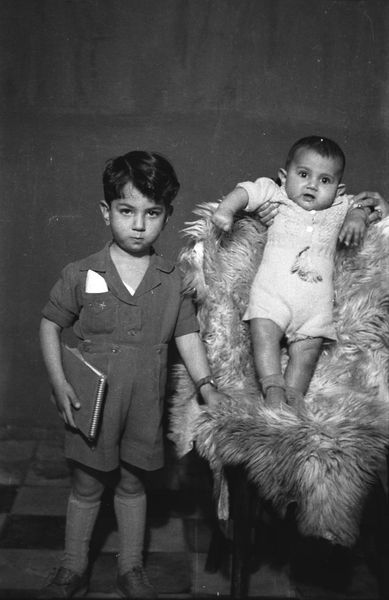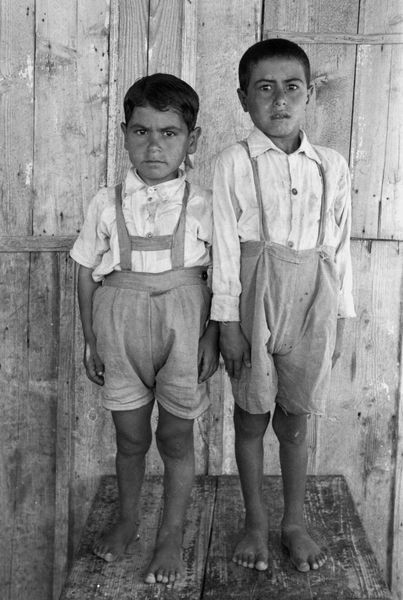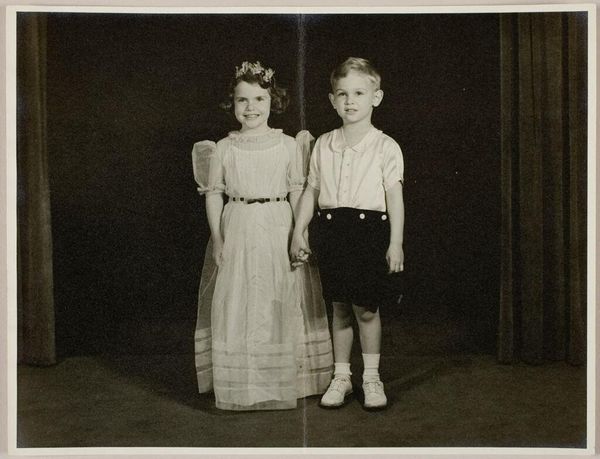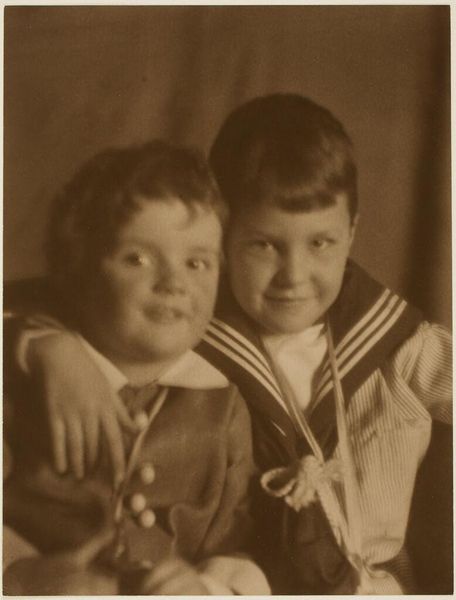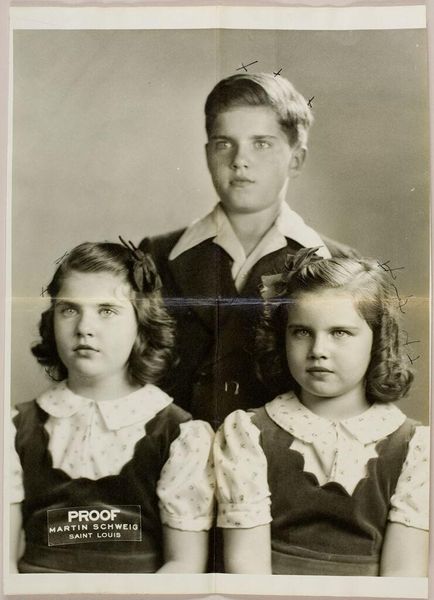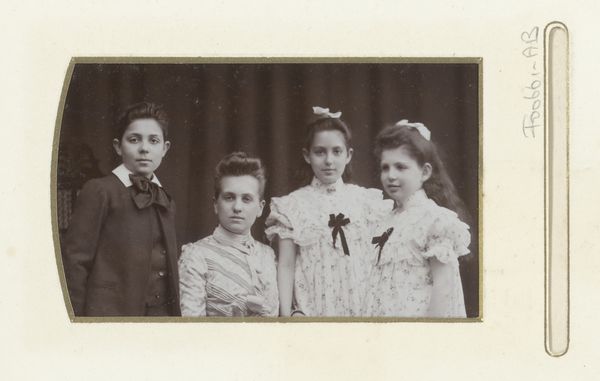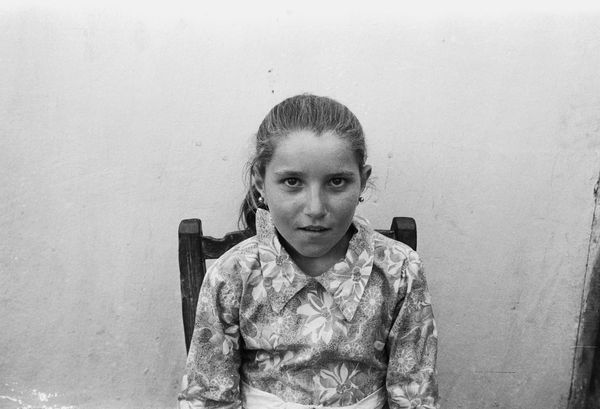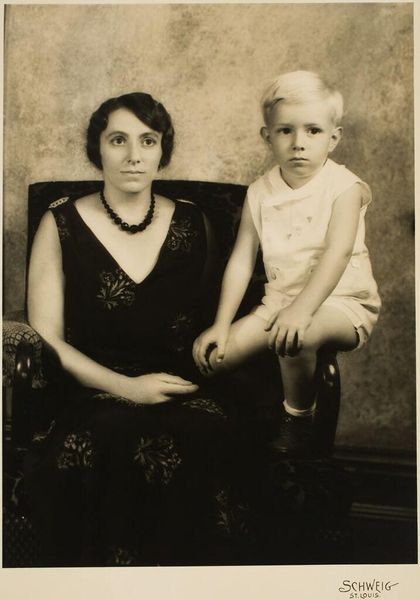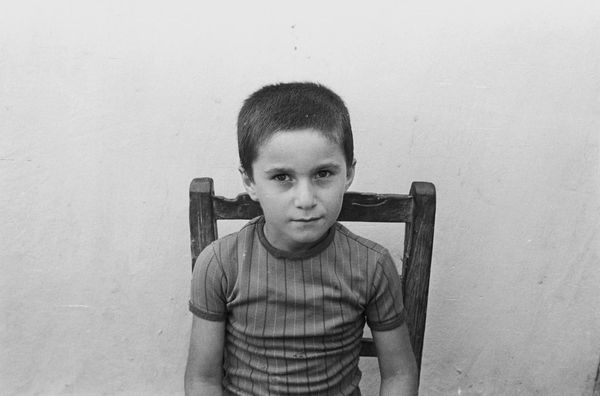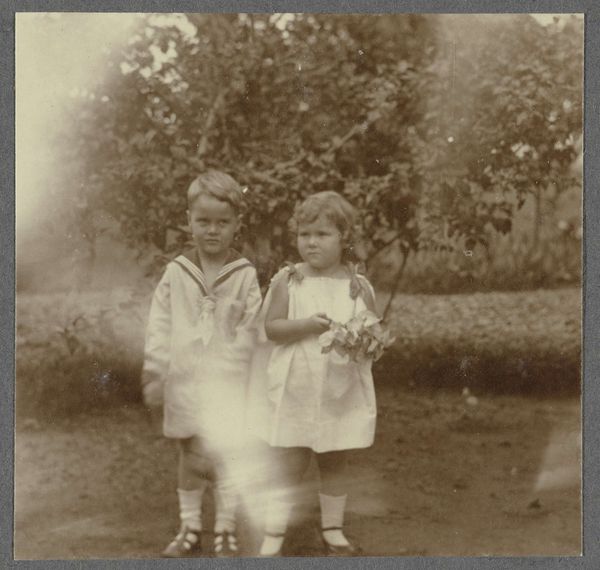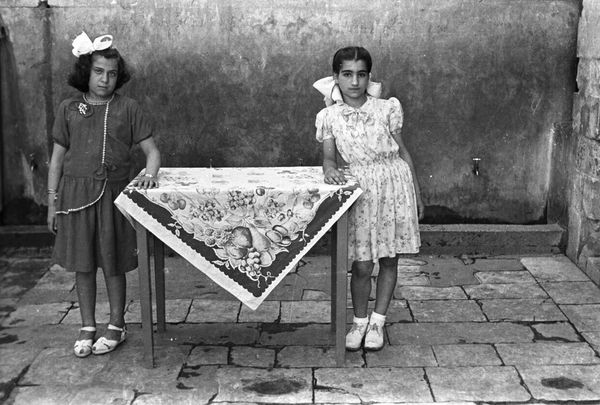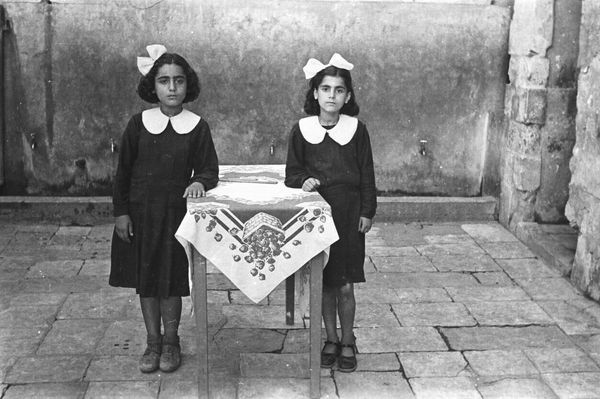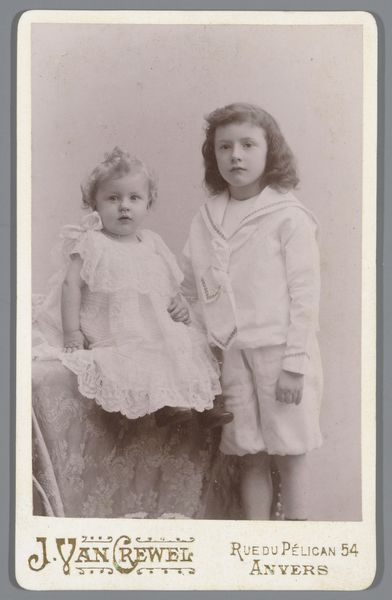
Two Palestinian sisters. Studio Shehrazade, Saida, Lebanon, 1960s. Hashem el Madani 2007
0:00
0:00
Dimensions: image: 191 x 245 mm
Copyright: © Akram Zaatari, courtesy Hashem el Madani and Arab Image Foundation, Beirut | CC-BY-NC-ND 4.0 DEED, Photo: Tate
Editor: This is Akram Zaatari’s "Two Palestinian Sisters. Studio Shehrazade, Saida, Lebanon, 1960s," a black and white photograph. The girls' matching outfits, particularly the hats, create a somewhat solemn mood. What symbols do you see at play here? Curator: The hats, resembling military or naval caps, carry significant weight. They evoke ideas of identity, authority, and perhaps even displacement. Consider how the symbols of power and belonging resonate differently when worn by children, particularly within the context of Palestinian history and cultural memory. Editor: So, these hats are not just accessories? Curator: Precisely! The photograph becomes a vessel of cultural memory, hinting at resilience and the complex interplay between personal identity and collective history. It invites us to contemplate the enduring legacy of displacement and the symbols that carry its weight. Editor: I see the photograph in a new light now, thank you.
Comments
tate 6 months ago
⋮
http://www.tate.org.uk/art/artworks/zaatari-two-palestinian-sisters-studio-shehrazade-saida-lebanon-1960s-hashem-el-madani-p79507
Join the conversation
Join millions of artists and users on Artera today and experience the ultimate creative platform.
tate 6 months ago
⋮
This work is one of a series of black and white silver gelatin photographs of varying sizes that are collectively titled Objects of study/The archive of studio Shehrazade/Hashem el Madani/Studio Practices. All of the photographs were taken by the Lebanese commercial photographer Hashem el Madani between 1948 and 1982 and compiled into the present group, 117 of which are in Tate’s collection, by the Lebanese artist Akram Zaatari. All of the photographs include people, either alone, in pairs or in small groups, and most were taken in Madani’s studio, although some were shot outside and in his subjects’ homes. The series features men and women and covers a wide age range from babies to elderly people. Almost all of the sitters assume poses deliberately for the camera, sometimes accompanied by props or costumes, and most gaze directly towards the lens. Many of the pictures show subjects interacting in various ways, including embracing, kissing and acting out scenes, such as a mock wrestling match. The photographs are mostly tightly cropped, with the sitter or sitters filling most of the frame, although in some cases the figures are positioned further away from the camera, for instance when shown sitting at a table or standing behind a chair. The photographs tend to have sparse backgrounds, often dominated by a blank posterior wall. They are mounted on white paper, displayed in plain white frames and signed on the back by Madani. Many of them have been organised into categories by Zaatari – such as a group featuring men dressed as Syrian resistance fighters and a collection depicting newly married couples – while the rest are presented individually. Zaatari has stated that although he prefers these groups to be displayed together, this is not a requirement (Akram Zaatari, email to Rachel Taylor, 24 April 2008, Tate Acquisition file).
